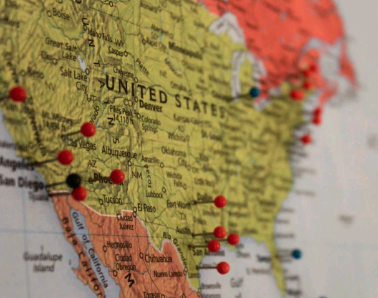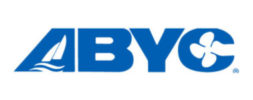NMMA recaps recent advocacy efforts

In the 10 weeks between March and early June, governors issued nearly 2,000 emergency orders, proclamations, and directives related to the COVID-19 crisis among additional issues. As states continue to relax stay-at-home orders, the NMMA advocacy team said it continues to monitor re-opening plans across the county as well as the impact on boating access, manufacturing, retail and large public events.
Earlier this week, NMMA and MRAA partnered together to release a new retail tracking map and resource page. This page will be updated weekly and can be found here.
Other NMMA COVID-19 state resources include guideline documents for boating access, manufacturing and business resources and reopening. Additionally, NMMA created best practices for resuming operations for manufacturers to use as guidelines to reopen their facilities.
Looking Ahead
State legislatures are coming back into session or calling special sessions throughout the summer to deal with the effects of COVID-19. Legislatures will be reviewing state budgets and business relief bills like business interruption insurance and liability. NMMA will monitor these sessions with an eye towards protecting boating businesses and how the impacts of state financial crisis will impact boating.
Beyond the pandemic, conservation issues have surfaced in California and South Carolina, with both states considering bills that would enact protections for significant swaths of state land and waters. Endorsed by the United Nations in 2018, the initiative would protect 30% of a country’s land and water from environmental degradation to counteract climate change and the loss of biodiversity. The U.S. Congress also recently considered a resolution supporting the “30-30” goal.
In California, AB 3030 would implement the 30-30 goal. While NMMA said it supports the legislation’s intent, the coalition seeks amendments that specify how and where the protection would be implemented and to assure that recreational fishing will be permitted. California already has some of the most protected coastal waters in the country, with recreational fishing banned in almost 15% of the coastal waters and nearly 15% more protected in various ways.
In South Carolina, H 5125/S 1024 was introduced in the legislature in early February. The bill has been referred to the agriculture and natural resources committee in both chambers and no action has been taken since. The legislature is not currently in session and is expected to return in September.
On June 23, 2020, the Georgia State Legislature passed HB-833, which fixes several issues that unnecessarily restricted boaters’ access to anchor in all of Georgia’s tidal waters. The legislation now heads to Governor Kemp who is expected to sign the bill into law. HB-833 allows responsible and reasonable docking regulations that put the recreational boating community’s needs at the forefront. The bill amends a mandatory 1,000-foot anchoring setback distance from all waterfront structures to now allowing docking for vessels in the following manner:
- 150 feet from a structure (including a private dock, pier, bridge, or wharf);
- 300 feet from a marina; and
- 500 feet from a shellfish bed.
Additionally, HB-833 creates “short term” (14 days) and “long term” anchoring, allowing a vessel to anchor for 14 cumulative days in the same location before needing to apply for a long-term anchoring permit. It also removes unnecessary discharge language that was implemented last year by Georgia HB-201, as federal law already prohibits dumping of untreated sewage into the water.
Wakesurfing continues to be a hot issue around the country as boating season reopens.
Minnesota: NMMA responded to concerns that wakesurfers were operating too close to shore by working with legislators to introduce SF 3624, which would have required surfers to stay at least 200 feet from shore or structures. While it passed the Senate, House Companion HF 3770 was not voted upon during the shortened legislative session
Indiana: This session, the legislature passed HB 1385, which was signed into law by Governor Holcomb on March 20, 2020. HB 1385 repealed a provision that prohibited individuals from wake surfing behind outdrive units, allowing for use of forward drive and emerging technologies. NMMA pushed for introduction and enactment.
Idaho: The state legislature did not enact a bill sponsored by NMMA and the Watersports Industry Association (WSIA) to enact a 200-foot setback bill. County governments continue to pursue extreme setbacks and bans on wakesurfing on the Spokane River near Coeur d’Alene and lakes near McCall, which is located two hours north of Boise.
Oregon: The Oregon State Marine Board banned wakesurfing along the Upper Willamette River in the Newberg Pool area, save for two zones totaling approximately three miles long. Operators of wakesurf boats must take an annual safe towing course in order to tow wakesurfers in the stretch of the river, but nowhere else in the state. These actions follow a multi-year, bruising battle by river environmentalists who oppose the sport, claiming shoreline erosion, user conflicts with smaller watercraft and paddlers and turbidity.
New Hampshire: The “HB 137 Commission,” more formally known as “The Commission to Examine the Effects of Wake Boats in the State of New Hampshire” will release its comprehensive report on wakesurfing at the end of June. The commission has met regularly since September 2019, and compiled numerous reports, research by independent wave energy experts and universities, testimony from boaters, homeowners, environmentalists, dealers and the WSIA. These documents and minutes from the meetings can be found here. WSIA was represented on the Commission by Chris Bischoff, a lobbyist for the Watersports Industry Association. Other members represented law enforcement, homeowners, legislators, boat dealers and environmentalists. Regulators and legislators in other states likely will use the report to consider what should be done in their states to respond to conflict among boaters, homeowners, wakesurfers and others on the waterways. Environmentalists have weighed in with concern about shoreline impacts as well as turbidity.




